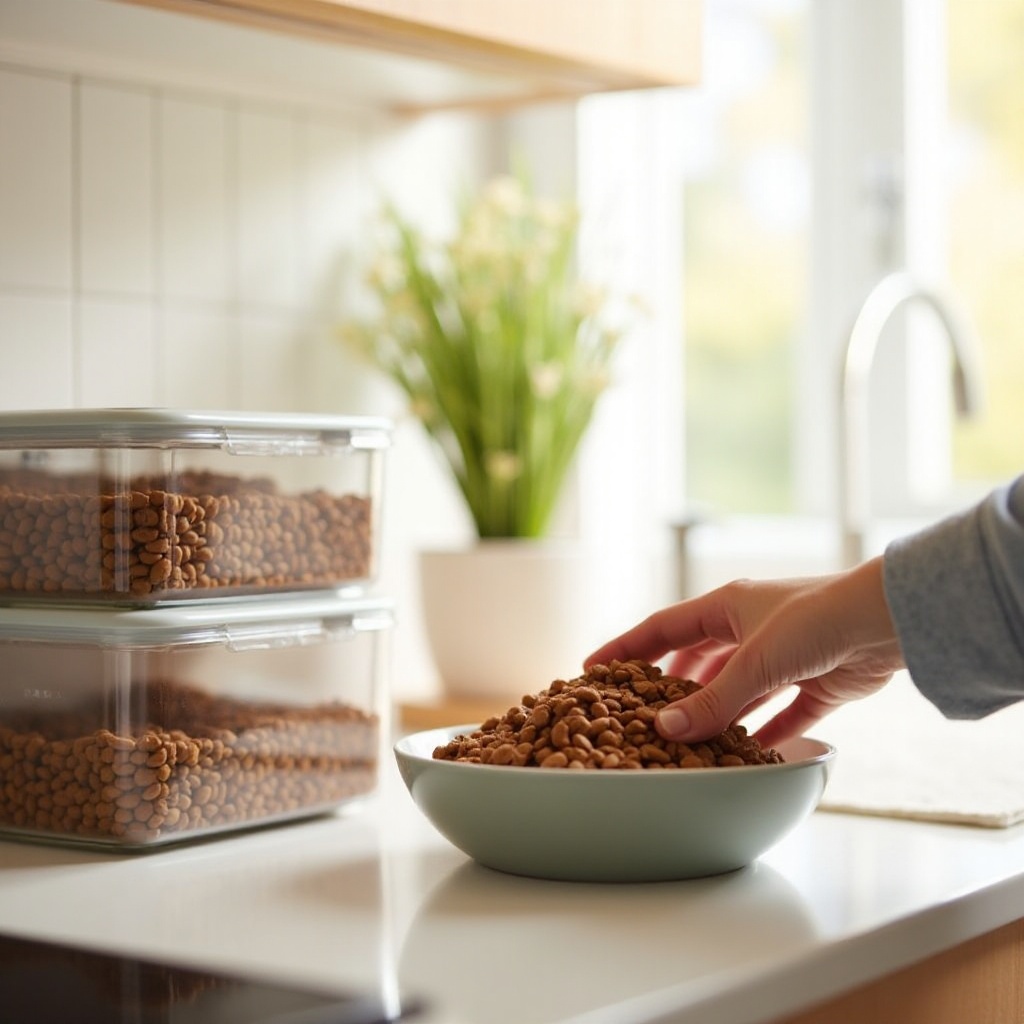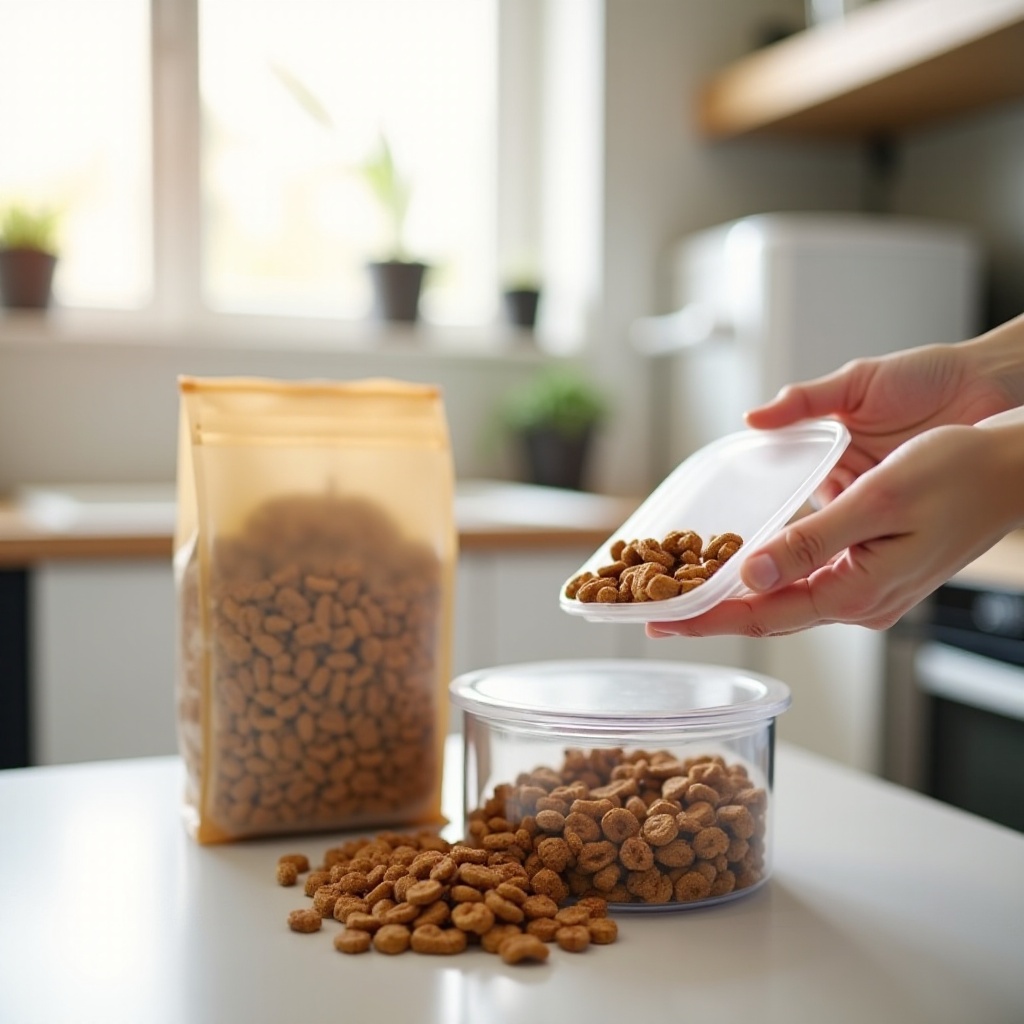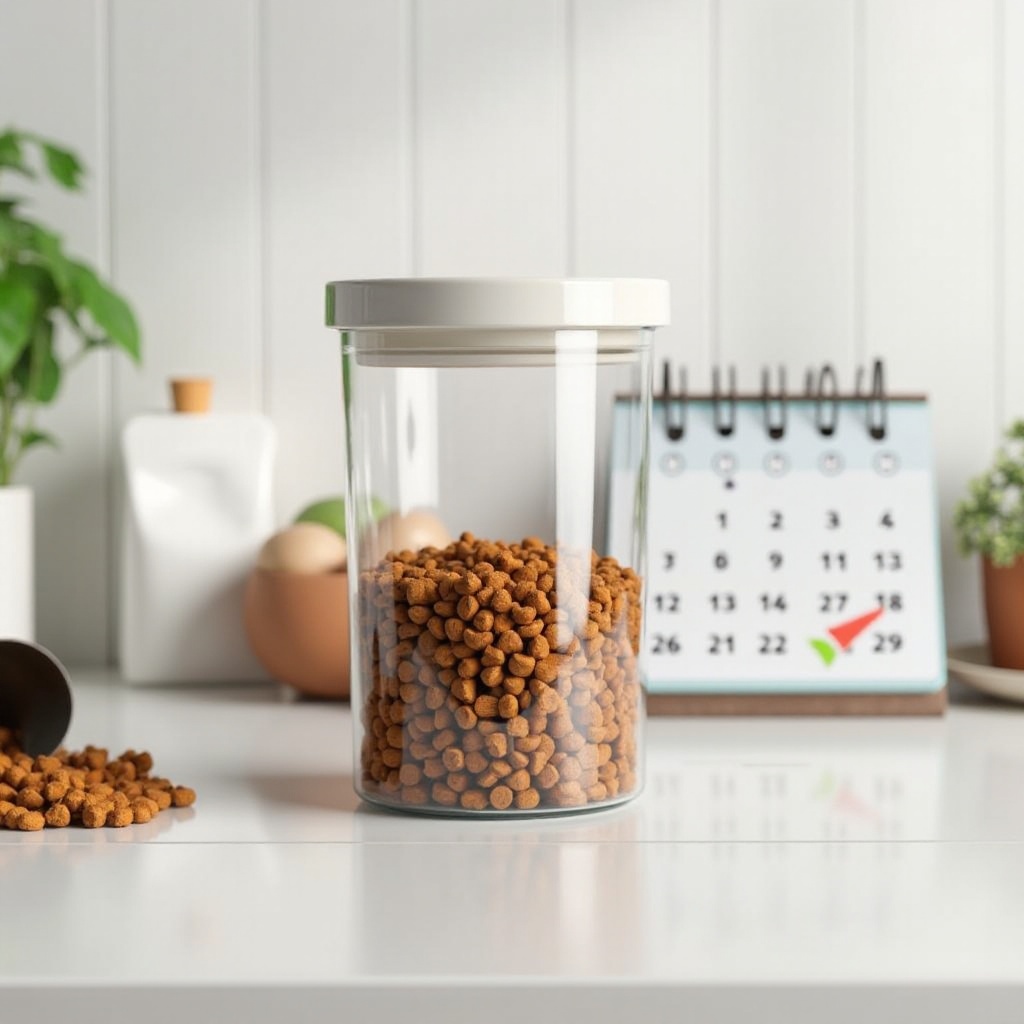Introduction
Maintaining the freshness of your dog’s dry food post-opening is crucial for their health and well-being. Proper storage not only preserves the nutritional value but also prevents contamination and spoilage. Many pet owners may not know the best practices for keeping dry dog food fresh. This guide will provide you with essential tips and methods to ensure your pet’s food remains optimal for consumption.

Why Keeping Dog Food Fresh is Important
Keeping dog food fresh is vital for several reasons. Firstly, fresh food retains its nutritional value, which is essential for your dog’s health. Dry dog food fortified with vitamins, minerals, and essential nutrients can degrade if not stored correctly, leading to deficiencies.
Secondly, there’s the risk of contamination. Once a bag of dog food is opened, it can become more susceptible to bacteria, mold, and pests. This poses significant health risks to your dog, including digestive issues and more severe illnesses.
Finally, preserving the flavor and texture of the food is important. Dogs may refuse to eat stale or spoiled food. By keeping it fresh, you ensure your dog enjoys their meals and maintains a healthy appetite.
Understanding How Dry Dog Food Can Go Bad
To keep your dog’s food fresh, it is important to understand how dry dog food can spoil. Oxidation is a major factor; exposure to air can degrade the fats in the food, reducing its nutritional quality and leading to rancidity.
Moisture is another culprit. Dry dog food is designed to have low moisture content. If it absorbs water from the environment, it can lead to mold growth. Similarly, exposure to heat and sunlight can accelerate spoilage, breaking down the food’s essential fats and proteins.
Pests such as insects and rodents are attracted to dog food. An open bag can become a breeding ground if not properly stored. Knowing these factors allows you to take appropriate measures to prevent spoilage.

Proper Storage Containers
Choosing the right storage container is essential in maintaining the freshness of dry dog food.
Types of Containers: Plastic, Glass, and Stainless Steel
- Plastic Containers: Ensure they’re BPA-free to avoid chemical contamination. Look for containers that are sturdy and have a tight seal.
- Glass Containers: An excellent option because they are non-reactive and don’t absorb odors. However, they can be heavy and breakable.
- Stainless Steel Containers: Durable, non-toxic, and easy to clean. They are highly recommended for their longevity and safety.
Features to Look For: Airtight, BPA-Free, etc.
When selecting a container, make sure it’s airtight. An airtight seal prevents moisture and air from entering, essential for maintaining freshness. Also, ensure the container is BPA-free to avoid exposing your pet to harmful chemicals.
Ideal Storage Locations
Aside from containers, the location of your dog food storage plays a crucial role.
Optimal Temperature and Humidity Levels
Store the container in a cool, dry place. The optimal temperature range is between 50°F and 70°F (10°C – 21°C). Avoid areas with high humidity as moisture can quickly compromise the food’s quality. Basements and garages can be good options if they stay cool and dry.
Avoiding Sunlight and Heat Sources
Store dry dog food away from direct sunlight and heat sources like ovens or radiators. Excessive heat accelerates the degradation of fats and nutrients, leading to quicker spoilage. Keeping the food in a dark, cool place prolongs its shelf life.
Maintaining Freshness Through Serving Practices
How you serve your dog’s food can also impact its freshness.
Portion Control
Avoid exposing the entire content of the storage container to air each time you feed your dog. Use a smaller serving container to measure and dispense the appropriate amount of food for each meal.
Minimizing Air and Moisture Exposure
Seal the main container immediately after scooping out the food. If you use the original bag within a container, roll the top tightly and clip it to prevent air and moisture from getting in.
Monitoring and Maintaining Freshness
It’s also important to regularly check the quality of the stored food.
Checking for Signs of Spoilage
Regularly inspect the food for any changes in color, texture, or smell, which can indicate spoilage. If you find any signs of mold or an unusual odor, discard the food immediately to prevent health risks to your dog.
Understanding Best-By Dates
Pay attention to the best-by dates on the packaging. While these dates indicate peak freshness, proper storage can extend the usability slightly beyond this period. However, always prioritize your dog’s health by not using food that shows any signs of spoilage.

Conclusion
Keeping dry dog food fresh after opening involves using proper storage containers, selecting ideal storage locations, implementing good serving practices, and regularly monitoring the food’s condition. By following these guidelines, you can ensure your dog’s food remains nutritious and safe, contributing to their overall health and well-being.
Frequently Asked Questions
How long does dry dog food stay fresh after opening?
Dry dog food usually stays fresh for about 4-6 weeks after opening, provided it is stored correctly in an airtight container and in a cool, dry place.
Can I freeze dry dog food to keep it fresh longer?
Freezing dry dog food is not typically recommended as it can impact the texture and nutritional quality. However, if you choose to freeze it, ensure it is in an airtight, freezer-safe container.
What should I do if my dog’s food goes bad before the expiration date?
If your dog’s food spoils before the expiration date despite proper storage, contact the manufacturer. They can provide further guidance and possibly offer a replacement.
